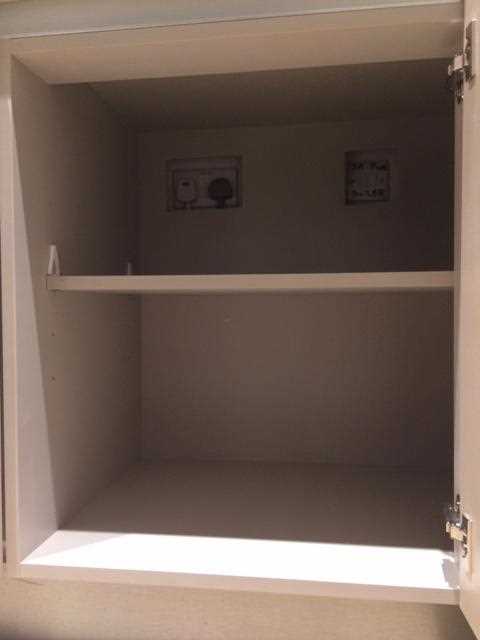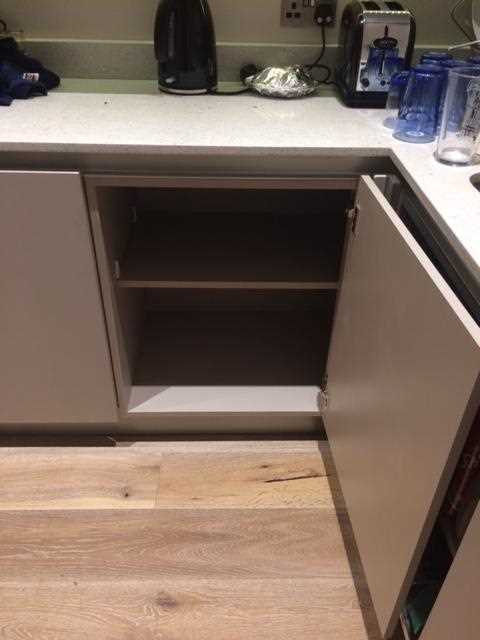




Are you wondering if you can replace your integrated dishwasher with a freestanding one? There’s no need to stick to the same type if you’re looking for an upgrade or a change in your kitchen setup. While integrated dishwashers are located within your kitchen cabinets and have a sleek, hidden appearance, freestanding dishwashers can offer their own advantages.
One of the main advantages of freestanding dishwashers is the flexibility they provide. Unlike integrated dishwashers, they can be placed anywhere in your kitchen, giving you more options when it comes to fitting the appliance in the right size and location. Plus, if you ever need to move or replace the dishwasher, you won’t have to go through the hassle of fitting it into a specific cabinet space.
When it comes to looks, some people may prefer the clean and seamless appearance of integrated dishwashers, while others might like the modern and stylish look of freestanding ones. It all comes down to personal preference and the overall design of your kitchen. So, if you’re considering a change, don’t let the thought of replacing an integrated dishwasher with a freestanding one discourage you.
One common question homeowners have is whether they will need to hire tradespeople, such as plumbers or cabinet fitters, to install the new dishwasher. The answer depends on the specific requirements of the job. In some cases, it may be a simple swap, requiring minimal adjustments. In others, you may need professional help to ensure everything is fitted correctly and to avoid any potential issues related to plumbing or cabinet adjustments. It’s best to consult with a qualified professional to get accurate advice for your specific situation.
Another key consideration when thinking about replacing an integrated dishwasher with a freestanding one is the noise level. Newer freestanding dishwashers often come with noise reduction features, making them just as quiet as integrated ones. However, it’s always a good idea to check the noise rating of the dishwasher before making a purchase, especially if noise is a concern for you.
In conclusion, while there are advantages and disadvantages to both integrated and freestanding dishwashers, it is possible to replace an integrated dishwasher with a freestanding one. Consider your kitchen layout, personal preferences, and any specific needs or requirements you have before making a decision. And as always, don’t hesitate to get quotes and seek professional advice from experts in the field for a smooth and successful dishwasher replacement job.
Consider the Installation
When replacing or installing a dishwasher, it’s important to take into consideration the installation process. Whether you’re looking to switch from an integrated dishwasher to a freestanding one, or just replacing an old dishwasher with a newer model, there are a few things you need to keep in mind.
1. Fitting the new dishwasher into your kitchen
One of the first questions you need to ask yourself is whether the new dishwasher will fit into the existing space. Integrated dishwashers are built to be flush with your cabinets, while freestanding dishwashers can be located anywhere in your kitchen. If you’re replacing an integrated dishwasher, you’ll need to remove it and make sure the space is suitable for a freestanding one.
2. Getting the right dimensions
Before you start looking for a new dishwasher, it’s important to measure the space where your old one was located. You’ll need to know the height, width, and depth of the area, as well as where the water supply and drain connections are located. Use these measurements to find a new dishwasher that will fit perfectly into the space.
3. Hiring a professional plumber

If you’re not familiar with plumbing or confident in your DIY skills, it’s best to hire a professional plumber to install the new dishwasher for you. They will have the knowledge and experience to ensure everything is connected properly and functions correctly.
4. Adjusting cabinets and countertops
When replacing an integrated dishwasher with a freestanding one, you may need to make adjustments to your cabinets and countertops. This could involve removing or repositioning cabinets to create enough space for the new dishwasher, as well as adjusting the height of your countertops to match the new appliance.
5. Electrical and water connections
Make sure you know where the electrical and water connections are located before installing the new dishwasher. You may need to move these connections to accommodate the new appliance, or hire an electrician to do so for you.
6. Energy efficiency and capacity
Consider the energy efficiency and capacity of the new dishwasher you’re installing. Look for models that have high energy efficiency ratings to save on your utility bills. Also, choose a dishwasher with a capacity that suits your needs. If you have a larger household, a bigger capacity dishwasher will be more suitable.
FAQs
Here are some frequently asked questions related to installing or replacing a dishwasher:
- Can I replace an integrated dishwasher with a freestanding one?
Yes, you can replace an integrated dishwasher with a freestanding one. However, you may need to make adjustments to your kitchen cabinets and countertops to accommodate the new appliance.
- Do I need to hire a professional plumber to install a dishwasher?
If you’re not confident in your plumbing skills, it’s recommended to hire a professional plumber to install the dishwasher for you. They will ensure everything is connected correctly and functions properly.
- What if my cabinets are not adjustable?
If your cabinets are not adjustable, you may need to consider replacing them with ones that can accommodate the new dishwasher. This will ensure a proper fit and a seamless look in your kitchen.
- Will the new dishwasher be able to fit into my existing space?
You’ll need to measure the dimensions of your existing space to find a dishwasher that will fit properly. Consider the height, width, and depth of the space, as well as the location of the water supply and drain connections.
- Can I move my freestanding dishwasher to a different location?
Yes, you can move a freestanding dishwasher to a different location in your kitchen, but you’ll need to consider the water supply and drain connections and ensure there is enough space for the appliance to function properly.
There’s a lot to consider when it comes to installing or replacing a dishwasher, whether it’s integrated or freestanding. It’s important to do your research and hire the right tradespeople to ensure everything goes smoothly. Now that you know what to look for and what questions to ask, you can confidently find the right dishwasher for your kitchen.
Evaluate the Size and Dimensions
When considering replacing an integrated dishwasher with a freestanding one, it is important to evaluate the size and dimensions of the space you have available.
As the name suggests, freestanding dishwashers are designed to stand alone, which means they are not built into your kitchen cabinetry like integrated dishwashers. This gives you more flexibility in terms of where you can place them, but it also means they take up more space visually.
Freestanding dishwashers generally have a better overall aesthetic, as they come in a wide range of styles and designs. If the appearance of your dishwasher is important to you, a freestanding model may be the better option.
When it comes to capacity, freestanding dishwashers usually have a larger capacity compared to integrated dishwashers. This means you can fit more dishes, pots, and pans into the dishwasher at once, allowing you to clean larger loads in fewer cycles.
If you are unsure of the exact dimensions you need, it can be helpful to measure the space where the integrated dishwasher currently sits and take note of any potential obstacles, such as pipes or wiring. This information will be useful when shopping for a new dishwasher.
It is also worth noting that freestanding dishwashers tend to be noisier compared to integrated models. The noise level is measured in decibels (dB), with lower numbers indicating a quieter operation. When comparing different models, look for a low noise level for a more peaceful kitchen environment.
Another thing to consider when evaluating the size and dimensions is the depth of the appliance. Integrated dishwashers are designed to fit flush with the front of your kitchen cabinets, while freestanding dishwashers usually have a protruding front.
So, before buying a freestanding dishwasher, make sure to measure the space you have available and consider the overall dimensions, including height, width, and depth. It is also a good idea to consult with a plumber or appliance installation professional to ensure the dishwasher can be properly installed in your desired location.
Frequently Asked Questions (FAQs)
- Q: Can an integrated dishwasher be replaced with a freestanding one?
- A: Yes, an integrated dishwasher can be replaced with a freestanding one, but you will need to consider the size and dimensions of your kitchen space.
- Q: What is the difference between integrated and freestanding dishwashers?
- A: Integrated dishwashers are built into your kitchen cabinetry and have a more seamless appearance. Freestanding dishwashers stand alone and can be placed anywhere in your kitchen.
- Q: How do I know if a freestanding dishwasher will fit in my kitchen?
- A: Measure the space where the integrated dishwasher currently sits and compare it to the dimensions of the freestanding dishwasher you are considering.
Final Thoughts

Replacing an integrated dishwasher with a freestanding one involves evaluating the size and dimensions of your kitchen space. Consider the overall dimensions, including height, width, and depth, as well as any potential obstacles. Consult with a plumber or appliance installation professional to ensure proper installation.
Check the Plumbing and Electrical Requirements

When replacing an integrated dishwasher with a freestanding one, it’s important to consider the plumbing and electrical requirements.
One of the advantages of freestanding dishwashers is that they can be placed anywhere in the kitchen, as long as there is a water supply and drain nearby. This means you have more options in terms of the location of your dishwasher.
Check if there is an available water connection and drain connection in the area where you want to place the freestanding dishwasher. If not, you may need to hire a plumber to install the necessary connections. Keep in mind that if your integrated dishwasher was previously plumbed, you might need to seal the plumbing completely to prevent leaks.
Furthermore, ensure that the electrical outlet is located near the desired spot for the freestanding dishwasher. Most dishwashers require a standard 120-volt electrical connection. If there is no outlet nearby, you may need to hire an electrician to install one.
It’s important to note that the electrical and plumbing requirements may vary depending on the specific model and brand of dishwasher you choose. Consult the installation manual or contact the manufacturer to ensure that the plumbing and electrical specifications are compatible.
Assess the Design and Aesthetics
When considering replacing an integrated dishwasher with a freestanding one, it’s important to assess the design and aesthetics of your kitchen. Integrated dishwashers are built-in and hidden behind a cabinet door, whereas freestanding dishwashers are standalone units with their own visible design.
If your cabinets are custom-made and designed specifically for an integrated dishwasher, switching to a freestanding dishwasher may not be the best option. The freestanding dishwasher may not fit properly or may not look aesthetically pleasing in your kitchen.
On the other hand, if you have standard cabinets or if the design of your kitchen allows for a freestanding dishwasher, you have more flexibility in terms of choosing the right dishwasher that matches your style and preferences.
Freestanding dishwashers come in various sizes, colors, and designs, so you can find one that complements your kitchen and fits your needs. You can consider factors like the capacity, the quality of the dishwasher, and how it looks with your other appliances. Some newer models also offer additional features and settings that may enhance your dishwasher experience.
However, it’s important to note that if you’re replacing an integrated dishwasher with a freestanding one, you’ll need to make some adjustments, such as removing the cabinet door and ensuring that the space is suitable for a freestanding dishwasher.
Another aspect to consider is the noise factor. Integrated dishwashers are often quieter than freestanding ones because they are built into cabinets and surrounded by insulation. If noise is a concern for you, make sure to choose a freestanding dishwasher with a noise level that meets your preferences.
In summary, when assessing the design and aesthetics of your kitchen, consider the following:
- Will a freestanding dishwasher fit properly and look good in your kitchen?
- What is the capacity and quality of the freestanding dishwasher you are considering?
- Are there any disadvantages or advantages to switching from an integrated to a freestanding dishwasher?
- Will the noise level of the freestanding dishwasher be acceptable?
By carefully considering these factors, you’ll be able to make an informed decision about whether to replace your integrated dishwasher with a freestanding one.
Compare the Cost and Benefits
When it comes to replacing an integrated dishwasher with a freestanding one, there are several factors to consider, including cost and benefits. Let’s take a closer look at the differences between these two categories and what you can expect from each option.
Cost
If you’re on a tight budget, a freestanding dishwasher might be a more affordable choice. While fully integrated dishwashers tend to be more expensive due to their built-in design and seamless fit into your kitchen cabinets, freestanding models offer a more budget-friendly option.
Installation
If you’re handy and enjoy DIY projects, you might be able to install a freestanding dishwasher yourself, saving on installation costs. On the other hand, installing a fully integrated dishwasher might require the help of tradespeople who are experienced in fitting integrated appliances into existing cabinets.
Size and Capacity
A standard integrated dishwasher is usually designed to fit into a specific cabinet size, while freestanding dishwashers come in various sizes to accommodate different kitchen layouts. If you have unique cabinetry or limited space, a freestanding dishwasher could be the right choice.
Energy Efficiency
Energy ratings for both integrated and freestanding dishwashers can vary. However, newer models often come with high energy ratings, so you can find energy-efficient options in both categories. Always check the energy rating to ensure you’re making an environmentally friendly choice.
Appearance and Adjustability
If aesthetics are important to you, a fully integrated dishwasher could be the way to go. It blends seamlessly with your kitchen cabinets, giving a uniform look. However, freestanding dishwashers offer the advantage of being adjustable and can be easily moved if needed.
Related Maintenance and Care

When it comes to maintenance and care, both integrated and freestanding dishwashers require regular cleaning and upkeep. However, since freestanding dishwashers are not built into your cabinets, they may be easier to access and clean compared to integrated models.
Final Thoughts
Ultimately, the decision between a freestanding and fully integrated dishwasher depends on your specific needs and preferences. Consider factors such as cost, installation, size, energy efficiency, appearance, and maintenance when making your choice. Take your time and weigh the pros and cons of each option before buying a new dishwasher.
FAQ
Can I replace an integrated dishwasher with a freestanding one?
Yes, you can replace an integrated dishwasher with a freestanding one. However, there are some considerations to keep in mind. You may need to adjust the plumbing and electrical connections, as well as ensure that there is enough space for the new dishwasher. It’s also important to consult with a professional to ensure that the replacement is done correctly and safely.
What are the advantages of a freestanding dishwasher over an integrated one?
There are a few advantages to having a freestanding dishwasher over an integrated one. First, freestanding dishwashers are generally easier to install and replace. They can also be moved to different locations if needed. Additionally, freestanding dishwashers tend to have more options and features available compared to integrated ones.
What are the disadvantages of replacing an integrated dishwasher with a freestanding one?
There are a few disadvantages to replacing an integrated dishwasher with a freestanding one. One major disadvantage is that freestanding dishwashers take up more floor space and may not blend in as seamlessly with the rest of your kitchen. Additionally, the process of replacing an integrated dishwasher with a freestanding one can be more complicated and may require adjustments to plumbing and electrical connections.
Do freestanding dishwashers require any special installation?
Freestanding dishwashers do not require any special installation. They simply need to be connected to a water source and drain. However, it’s important to ensure that the area where the freestanding dishwasher will be placed has sufficient space and proper connections for plumbing and electrical.
Can I install a freestanding dishwasher under a countertop?
No, freestanding dishwashers are designed to be standalone units and cannot be installed under a countertop. They are meant to be placed in an open space in your kitchen. If you are looking to install a dishwasher under a countertop, you will need to consider an integrated or built-in model.
Are freestanding dishwashers more expensive than integrated ones?
The cost of freestanding dishwashers can vary depending on the brand, features, and quality. In general, however, freestanding dishwashers tend to be more affordable compared to integrated ones. The installation and replacement of freestanding dishwashers are also typically less expensive since they do not require custom cabinet modifications.











